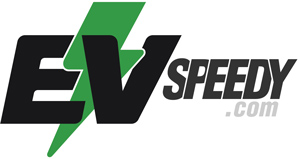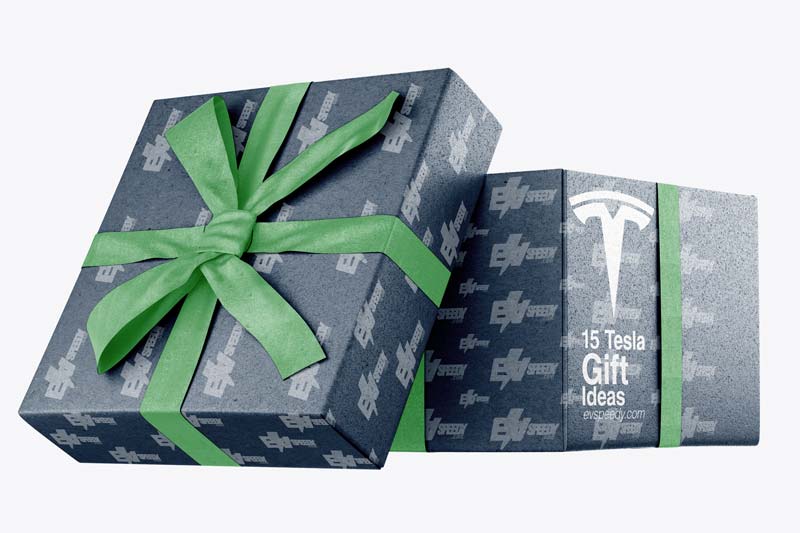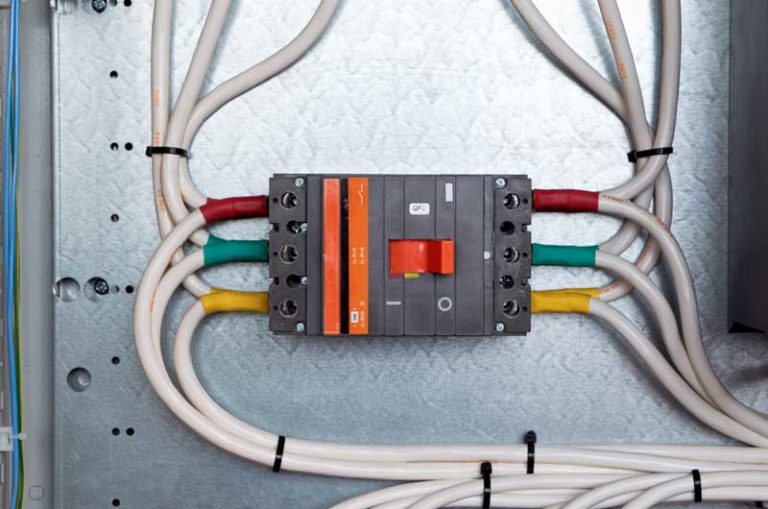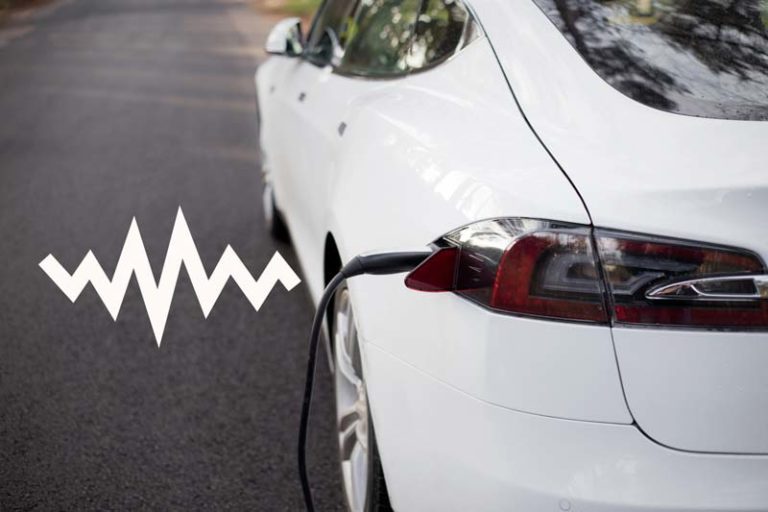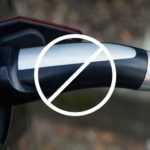Basic physics taught us that water and electricity never mix. As the world ushers in a new era of revolutionary electric cars (and trucks), who would’ve thought that tiny drops of rain would have the potential to change your car-buying decision? If you’re wondering whether you can charge a Tesla in the rain, here’s some good news for you.
You can charge a Tesla in the rain without shorting out your expensive battery or risking potentially lethal electrical shocks. Teslas and chargers can communicate well during the rain. Make sure that the charging port is dry before plugging it in. There are some other safety precautions as well.
In this article, I’ll answer all the questions you may have about charging your Tesla in the rain and what to avoid during the process.
- Can you Charge a Tesla in the Rain?
- Are Tesla Chargers Safe To Use in the Rain?
- Tesla Charging Capabilities and Limitations in the Rain
- Are Tesla Chargers Waterproof?
- Safety Features Tesla Chargers Have for Charging in the Rain
- Protecting Your Tesla Charger: Tips for Rainy Weather
- Charging a Tesla in Snow
- Charging a Tesla During a Thunderstorm
- Charging your Tesla Safely in Heavy Rain at other EV Chargers
- Waterproofing the Tesla Charging Port
- Is it Safe to Leave a Tesla Plugged in During a Thunderstorm?
- Quick Ways to Open a Tesla Charge Port
- How Much Does it Cost to Charge a Tesla?
- How Long Does Charging a Tesla Take?
- How Much Current Does a Tesla Charger Draw?
- How Much Electricity to Charge Tesla at Home?
- Does an Electric Car Charge Faster when Off?
- How do I Charge a Tesla at Home?
- How to Park at Tesla Supercharger
- How to Disconnect Tesla Charger
- What Safety Precautions can I Take When Charging my Tesla?
- Do Tesla Owners Need to Have their own Charger?
- Are Tesla Chargers Safe for Outdoor Use?
- Do I need an Extension to Charge my Tesla?
Can you Charge a Tesla in the Rain?
You can charge your Tesla in the rain. Just like any other electronic device, Teslas are designed to withstand different weather conditions, and that includes charging them during a rainstorm. However, it’s important to ensure that you’re charging your vehicle safely.
Firstly, it’s essential to understand how electric vehicles work. Unlike traditional gas-powered cars, Teslas run on electricity stored in their batteries. Charging stations provide this energy back into the car’s battery pack, allowing for extended driving ranges without harmful emissions.
This process involves electricity flowing through cables from the charging station to the car’s port – which raises concerns about water damage if done incorrectly during rainy weather conditions. In this article, I’ll explore everything you need to know about safely charging your Tesla in the rain while staying dry and weatherproof.
Are Tesla Chargers Safe To Use in the Rain?
I’ve seen Tesla dish out different types of chargers with each purchase. Some chargers won’t come with your purchase, so you’ll have to buy them from a vendor.
Despite their varying power-carrying capacities, Tesla chargers are generally considered safe for normal applications. But can you really use them safely in the rain?
Tesla chargers are safe to use in the rain. You can plug yours in the charging port while it rains. However, don’t jam the connector into the port when wet. If the charging system detects a slight power leakage, no current flows through the cable, and your batteries won’t charge.
If you’re thinking about charging your Tesla in the rain but have some safety concerns, fret not. It’s safe, so long as you don’t let water in the charging port or anywhere near the connector. Charging in an electrical storm, on the other hand, is probably not a good idea.
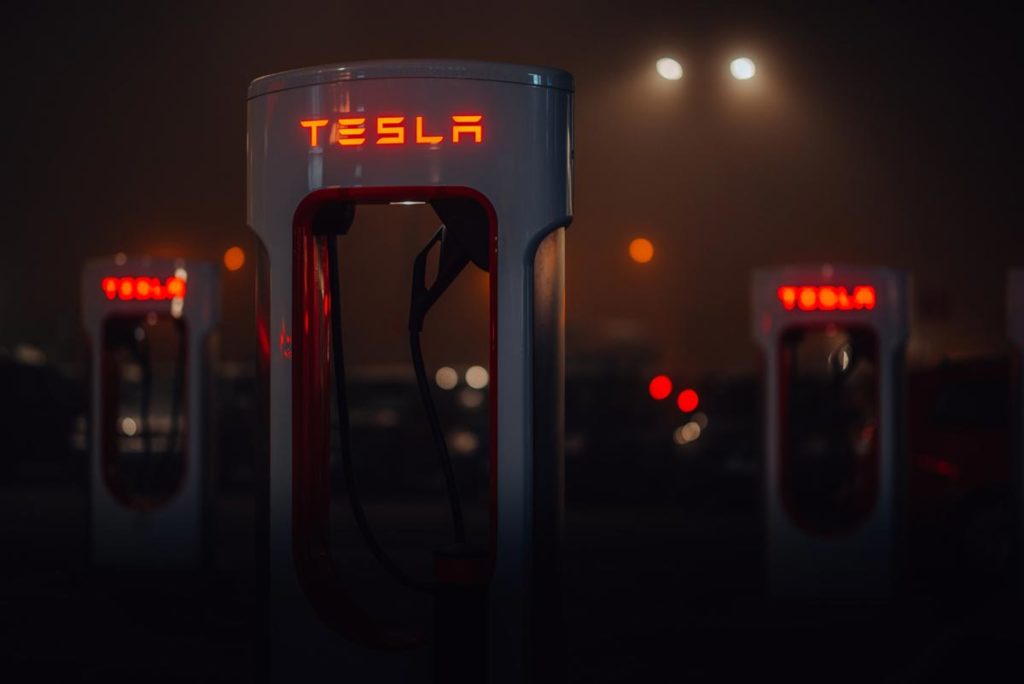
Safety Precautions For Charging A Tesla in Inclement Weather
Here are other guidelines to keep yourself out of harm’s way when using Tesla chargers in the rain:
- If the outlet is completely covered in snow, ice, or submerged in water, don’t plug in your connector.
- If you use a mobile connector, keep it in a clean, dry place.
- Don’t spray or submerge your charger in any liquid.
- Although you can use the charger when it rains, you don’t have to. Tesla warns owners against charging in times of severe rainfall.
- Don’t leave your charger outside. Water may seep in and damage the parts.
As you can see, Tesla warns strongly against exposing your chargers to water in liquid, ice, or snow form. Doing so presents the risk of an electrical shock, fire, or serious injury.
For more information about the use of Tesla chargers, check out these manuals:
In the next few sections, I will go through the various Tesla chargers and discuss the charging capabilities and limitations in the rain.
Tesla Charging Capabilities and Limitations in the Rain
Tesla Mobile Connector and Destination Charger
These two chargers are exactly the same and have the same safety features. The Destination Charge got its name because it is often found outside next to hotels, at campsites, or other destination endpoints you can find along your trip.
When parked outside, you can use the extension cord to plug in your Tesla where all the other household appliances are plugged in.
The keyword here is “outside“. It is made to withstand and be used in almost any weather condition.
When using this charger with the standard cable, you will often have to wait for a long time to get enough miles of range to reach your destination. When waiting for these long periods there is a good chance that you might have to charge your Tesla in the rain with inclement weather conditions.
When plugging in your car, the box (panel) will communicate with your Tesla to check if there are any ground faults or issues. If all is well, the relay in the box clicks and starts charging.
It is completely safe to plug in and unplug any Tesla with any charger in the rain. This can be done without getting shocked because the charge will stop as soon as you press the button to remove the cable from the charge port. When you press the button it will turn off the charger first to disconnect high-power voltage to the car before it allows you to unplug.
Tesla Wall Connector
The Tesla Wall Connector is almost exactly the same as the Mobile Charger. The only difference is the charge panel or box.
The third-generation wall connector is like a smart charger and has Wi-fi. This will ensure that you can check out the charging process from your phone in your home (and don’t have to sit in the car while it’s raining).
This is a convenient way to check if there are any interruptions or problems with the circuit breaker during charge time.
The charge panel is made to work indoors and isn’t recommended to be used during severe rain. It will still work though.
Tesla Superchargers
The only real difference between the Supercharger and the chargers mentioned above is the charger cord, which allows for better charging speeds with a higher voltage.
Most Superchargers are outdoors and are built to be used in almost any any weather condition.
Luckily when charging at Supercharger stations, it shouldn’t take longer than an hour of charging. This makes long trip more bearable and safer when needing to charge quickly.
As stated earlier, the charging cable and handle are completely safe to use in the rain. You cannot remove the charger without pressing the button on the charging handle. This will stop any high-voltage from passing through.
Are Tesla Chargers Waterproof?
Tesla and other EV manufacturers have taken a step further in developing chargers capable of withstanding all weather conditions. So far, the results have been nothing short of impressive as some high-end chargers don’t require a roof over their heads.
Some Tesla chargers, such as Tesla Wall Connectors, are waterproof and can be installed without housing. They can also withstand dust and other extreme weather conditions. On the other hand, Tesla chargers like Tesla Gen 2 Mobile Connector and the Tesla Corded Mobile Connector aren’t waterproof.
Tesla’s 240-volt NEMA 14-50 outlets used for home charging are also not waterproof. They need some extra protection against the elements.
| Capacity | Charge Rate | Rainproof? | |
| Supercharger | 480V | 200 miles (321.86 km) in 15 minutes | Yes |
| Tesla Wall Connector | 240V | 44 miles (70.81 km) per hour | Yes |
| Corded mobile connector | 120V | 10 km (6 miles) per hour of charge | No |
| Home charger (14-50 outlets) | 240V | 30 miles (48.28 km) per hour | No |
How do I Know If My Tesla Charger is Waterproof?
Some chargers come with an IP67 rating, which means they are dust-tight and can withstand immersion in up to one meter of water for 30 minutes without damage. This makes them ideal for outdoor charging, even during heavy rain showers. Look out for this rating on your charger.
However, it’s always better to err on the side of caution and avoid leaving your charger out in extreme weather conditions if possible.
Can You Waterproof a Tesla Charger?
For outdoor use, you’d need to install your outlets along with the NEMA 3R rainproof enclosure (which also happens to be useful against snow and ice).
Can a Tesla Charger get Wet?
Some Tesla chargers are waterproof and can withstand water exposure. However, you should never leave a Tesla charger out in the rain or other water for long periods of time. While the Tesla charger is designed to be weather-resistant and can withstand some rain, prolonged exposure to water can damage the electrical components inside.
Safety Features Tesla Chargers Have for Charging in the Rain
As mentioned before, high voltage can be potentially lethal if it comes into contact with rainwater. Although this is unlikely to happen with your Tesla connector, there’s still a small chance it could.
Well, Tesla has a backup plan to ensure that people don’t get electrocuted even when they go against the manual’s instructions.
Tesla charger connectors grip firmly onto the vehicle’s charging port, creating a tight seal where water can’t seep in. The chargers also have a relay, which communicates with the onboard computer and only turns on when the computer tells it that the vehicle is ready to charge.
But that’s not all.
The manufacturer alone isn’t responsible for your safety. Owners, too, have a role to play in ensuring personal safety when charging in the rain.
Protecting Your Tesla Charger: Tips for Rainy Weather
To make sure that your charger stays waterproof and functional during rainy weather, you can follow a few easy tips.
Use a Waterproof Cover for your Charger
It’s important to invest in a waterproof cover for your charger. This will protect it from any water damage and keep it dry even during heavy downpours.
Use a Shelter or Canopy
Try to position your charger under some sort of shelter or canopy if possible, such as an overhang or carport. This will provide an extra layer of protection against the elements and decrease the amount of rainfall that directly hits your charger.
Cover the Connector with your Hands
You should cover the connector as you walk it over to the car when it’s raining. This will keep it dry so it can safely be inserted into the charging port
Charger Outlet Height
You could also install your charger’s outlets at a minimum height of 18″ (45 cm) to protect them from splashing rainwater or getting submerged by a flood.
Charging a Tesla in Snow
If ice and snow fill in the charging port, you’re not supposed to forcibly scrape them off when your EV is charging. Instead, let the ice melt off naturally and wipe away the water.
You can also preheat the car for about half an hour. Check out the video below for how to safely defrost your car in case you have freezing rainfall:
You’re also not supposed to hang the connector in a downward-facing position. Rainwater may run down the length of the cable and reach the male pins on the connector.
Charging a Tesla During a Thunderstorm
Modern-day EV chargers are weather-resistant. Tesla chargers are no different. They’re made to withstand a variety of weather conditions, including inclement weather.
You can technically charge a Tesla in a thunderstorm. However, it’s not safe. Tesla warns owners against charging in the middle of severe weather. Instead, you want to wait until the end of the storm to resume charging.
When charging in the middle of a thunderstorm, you risk a massive power surge, should lightning strike your home,and somehow end up on your circuitry. Lightning strikes travel across your home’s wiring and can take out any device connected to the grid — including your car, connected to the outlet.
Now, don’t get me wrong here. Charging on a stormy day isn’t impossible. People do charge their cars during storms and we never hear catastrophic electrocution stories in the end.
But there’s still a significant risk of a massive power surge from a lightning strike. Rather be safe than sorry!
You can improve your home’s safety by installing lightning protection. Also, don’t forget to unplug your home gadgets from the wall socket during an electrical storm.
Charging your Tesla Safely in Heavy Rain at other EV Chargers
If you live in the US you will need a CCS Combo 1 Adapter to charge your Tesla because almost all non-Tesla charging stations use this charging standard. If you live in Europe, your Tesla will most likely be fitted with the CCS port already.
The CCS Combo 1 Adapter is well suited to protect you as well, as the current will only start flowing once all the connections from the charger to your car have been properly secured.
If the connection is wet or defective, it will not charge, protecting you in any heavy rainstorm.
As you can see from the image below, the charging port is very bulky but well suited to protect you from any dangers.
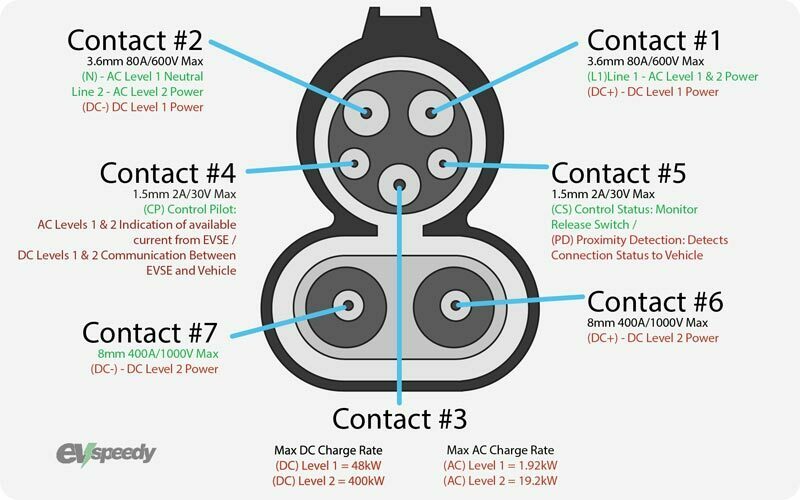
Waterproofing the Tesla Charging Port
The Tesla charging port is waterproof, but only when you keep it closed. If you leave the port open in the rain or snow, it may not charge the next time you plug it in.
Since Tesla chargers stop working when they are wet, it’s essential to keep your charging port closed until it’s time to charge. Avoid leaving the port open when it’s raining or snowing, and close it up immediately after you finish your charging session.
Is it Safe to Leave a Tesla Plugged in During a Thunderstorm?
Every Tesla is protected with a built-in surge protector that will protect the electrical components from any high-voltage electric shock. However, Tesla still recommends that you shouldn’t charge your vehicle during sever weather.
Tesla has strict safety measures to provide adequate protection to all internal components. It is as safe (if not more) as pumping a car with an internal combustion engine at a gas station.
Quick Ways to Open a Tesla Charge Port
This might come in handy and save you a little bit of time when you have to charge and you’re sitting in your Tesla while it’s pouring outside.
You can open the charging port of your Tesla before getting out. You can either use the touchscreen on the dashboard or the key fob.
In both these cases, make sure the vehicle is in Park.
Here’s how to do it:
Open Your Tesla Charge Port With The Touchscreen:
- From the touchscreen, tap the “Charging” icon.
- Tap the “Open Charge Port” button and the charging port should open automatically.
- Take your umbrella with you before getting out of your car so you don’t get wet. The charge port can get wet, don’t worry about that.
Open Your Tesla Charge Port With The Key Fob:
- Press and hold the “Unlock” button on the key fob for a few seconds.
- The charging port should open automatically.
How Much Does it Cost to Charge a Tesla?
In rainy weather, it might be more comfortable to charge your Tesla at a Supercharger because it is faster. If you’re curious about how much it’ll cost to power up your Tesla, let’s take a closer look at the factors that can affect this expense.
Firstly, the cost of charging your Tesla will vary depending on where you live and what electricity rates are in your area.
Secondly, the type of charger you use will also play a role in determining how much it’ll cost to charge your Tesla. Charging at home using a standard 120-volt outlet will be less expensive than using a Level 2 charger or Supercharger.
According to LeafScore, it can cost around $20-$25 to add 250 miles of range to your Tesla using a Supercharger. At home, it will cost less – around $14 – $18
When charging your Tesla, safety should always be a priority regardless of how much it costs. It’s important to follow proper charging protocol and ensure that all electrical connections are secure before beginning the charge.
Additionally, if you’re charging in the rain, make sure that both the charger and vehicle are sheltered from any potential water damage. Finally, keep an eye on weather forecasts and plan for inclement weather by investing in weatherproof equipment such as covers or portable shelters for added protection during rainy conditions while charging your Tesla.
How Long Does Charging a Tesla Take?
The quickest way to charge your Tesla is through a Supercharger station which can provide up to 200 miles of range in just 15 minutes. However, these stations are not as widely available as standard charging options such as home chargers and public Level 2 chargers which take longer but are more accessible.
A Level 2 charger typically provides around 25 miles of range per hour, so if you have an empty battery and need a full charge (depending on the model), it could take anywhere from 8-12 hours.
This may seem like a long time, but keep in mind that many people charge their Teslas overnight while they sleep or during work hours while they’re not using their car.
How Much Current Does a Tesla Charger Draw?
The amount of current drawn by a Tesla charger depends on different factors. Tesla cars have chargers inside them that come with different power ratings, which determine how quickly they can charge.
The current drawn by the charger depends on the power supply available and the charging capacity of the car.
For example, if a Tesla is plugged into a certain type of outlet, it will draw a specific amount of power to charge. The newer Tesla models can charge faster and may draw more current.
Using special chargers like wall connectors or superchargers can also speed up charging and require more current. It’s best to check the Tesla model’s information and ask a Tesla representative or an electrician to get accurate details about the charging current and capacity.
How Much Electricity to Charge Tesla at Home?
The amount of electricity used will depend on the battery size of your electric car and the charging speed of your charger. On average, a Tesla Model 3 with a standard range battery pack requires about 30 kWh (kilowatt hours) to fully charge from empty to full.
This means that if you have a typical residential electricity rate of $0.12 per kWh, it will cost around $3.60 to fully charge your vehicle.
Does an Electric Car Charge Faster when Off?
If you’re charging your Tesla at home with a Level 1 or Level 2 charger, turning off your car won’t make a significant difference in the charging speed.
However, if you’re using a DC fast charger, turning off your car can increase the charging speed by up to 10%.
How do I Charge a Tesla at Home?
To get started, you need a safe electricity source and a charging cable compatible with your vehicle.
First, locate the charge port on your Tesla. It can be found on the front driver’s side or rear driver’s side of the car depending on the model.
Once located, simply plug in the charging cable into both the charge port and power outlet.
Your Tesla will automatically begin charging as long as it is properly connected to a reliable electricity source.
How to Park at Tesla Supercharger
When you arrive at a Tesla Supercharger, make sure to park in one of the designated spots and plug in your charging cable to start fueling up for your next adventure.
Once you’re plugged in, take a moment to check the weather conditions. If it looks like rain is on the way, there are a few precautions you can take to stay safe and keep your car weatherproof.
First and foremost, make sure you’re using safe electricity by keeping your charging cable dry. Avoid touching any wet surfaces or standing in puddles while plugging in or unplugging your charger.
Additionally, try to park under cover if possible or use an umbrella as needed. Many Tesla Superchargers also have canopies or awnings that provide some shelter from the rain.
How to Disconnect Tesla Charger
First off, make sure your car is turned off and all doors are closed. This will prevent any electrical surges or accidents while disconnecting your vehicle.
Once you’ve ensured your car is safely turned off, locate the charging port on your Tesla. You should see a button near the port. Press this button to release the connector from your car. Pull gently but firmly to remove the charger.
What Safety Precautions can I Take When Charging my Tesla?
First and foremost, make sure you use a weatherproof charger that is designed to withstand rain, snow, or any other type of inclement weather. This will help prevent any damage to the charger itself and minimize potential risks.
Another important precaution is to always make sure that you are using safe electricity outlets and cords. Faulty cords or damaged outlets can cause electric shocks or fires, which can be extremely dangerous.
Before plugging in your Tesla charger, inspect the outlet and cord for any signs of damage such as frayed wires or loose connections.
Do Tesla Owners Need to Have their own Charger?
You’ll be happy to know that as a Tesla owner, you don’t need to have your own charger. This is because most charging stations are conveniently located throughout the city.
It’s always recommended to use an official Tesla charging station for safe electricity and optimal performance.
Are Tesla Chargers Safe for Outdoor Use?
Tesla chargers are perfectly safe to use outdoors, so you can enjoy the freedom of charging your car wherever you want without worrying about any risks.
Tesla has designed their chargers with weatherproofing in mind, ensuring that they are able to withstand a variety of different conditions. This means that whether it’s raining, snowing or even hailing outside, you can still safely charge your Tesla without any issues.
One of the key features that makes Tesla chargers safe for outdoor use is their durable design. These chargers are built to last and can handle extreme temperatures and weather conditions without any problems.
Additionally, most Tesla chargers come equipped with safety features like automatic shut-off systems and surge protection to help prevent damage to your vehicle or the charger itself.
Do I need an Extension to Charge my Tesla?
Most Tesla charging equipment comes with a long enough cord to reach your car from any outdoor outlet.
However, if you do find yourself needing an extension cord, it’s important to choose one that’s compatible with your charger and weatherproof for safety reasons. Using an extension cord that isn’t designed for outdoor use can be dangerous during wet conditions like rain or snow.
Can I charge my Tesla in cold weather?
Can I charge my Tesla in hot weather?
Check out these 20 great gift ideas for yourself or a Tesla fanboy.
Contact Us if you have any questions or queries.
